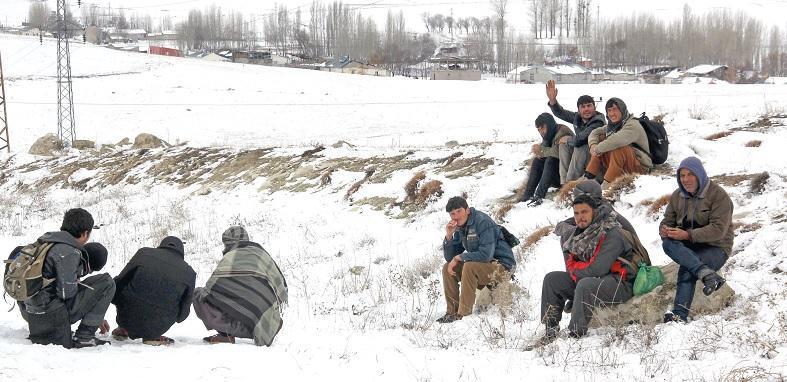Winter means more deaths for refugees
Zeynep Bilgehan - VAN

"All the morgues are full. Locals who find the bodies inform the prosecutors, and the corpses come to us for examination. We’ve been busily receiving the bodies since March. The traffic increased in April and May. We expect more bodies to be found as the snow melts."
This is how an official in the eastern province of Van described the situation in the area last May. In 2019, the number of bodies belonging to refugees that were found in Van doubled compared to the previous year, with the remains of more than 50 arriving at the forensic morgue in the first five months of 2019.
But Van’s bitter winter cold wasn’t the only cause of death: In July 2019, 17 refugees died when their minivan had a car accident. Their driver was their smuggler.
In December, a boat trying to cross Lake Van had an accident, killing seven – although 64 were saved. And the pace of the tragedies hasn’t let up in the first two months of 2020 either: At the beginning of February, 49 refugees called the police for rescue from the freezing cold.
The rescue operation lasted for five hours. Locals reported that 13 refugees might have lost their lives on Feb. 9. Officials in Van announced that the search would begin if weather conditions permitted. Most probably, locals will come across the remains themselves when the snow finally melts.
‘Winter means more deaths’
These are among just a few of the incidents occurring in Van. After the Aegean Sea, this border city by Iran is becoming a mass grave for refugees. Mahmut Kaçan, a member of the Van Bar Association’s Commission for Refugees, said there were no official records kept of the number of refugees who lose their lives on the border.
“There have always been particular incidents in Van, but we have never seen such mass deaths," said Kaçan, who used to work for the United Nations refugee agency, UNHCR. “Last year, in Başkale, a town close to the Iranian border, 26 bodies were found. In Çaldıran, another town close to the border, around 15 bodies were found. We learnt from the locals that there were more bodies on the Iranian side. These are only the ones that we know of … We can say that the number may be higher as some bodies were eaten by the animals or deformed. Since this winter is harsher than the previous year, we expect a rise in the number of deaths."
The refugees entering the country over the eastern border are mostly from Pakistan, Afghanistan, Iran or Bangladesh.
“But the risk is not over for those who cross the border alive. They lose their lives on the back of trucks in road crashes while being transported inside the country or drown while trying to cross Lake Van. We can find the dead bodies of refugees only when the snow starts to melt in spring. The cases are usually closed due to lack of grounds. There are no lawsuits at all on these incidents. It is also impossible to determine the identities of the victims as they do not have any documents on them. The unidentified bodies are buried in the cemetery of the unknown. The ones who are identified are sent to their countries of origin via their embassies. The relatives of victims are unable to learn what has happened due to economic or bureaucratic barriers," he said.
Asked what authorities could do to prevent such incidents, Kaçan said: “Asylum procedures should be more transparent. Migration laws are conducted according to security policies, and this increases the death tolls. Border units should patrol more frequently to support humanitarian aid. Locals who live on the border towns face accusations of ‘smuggling’ when they help refugees. Thus, they are afraid to help the refugees in need. Law enforcement officers should differentiate between these two cases."
















